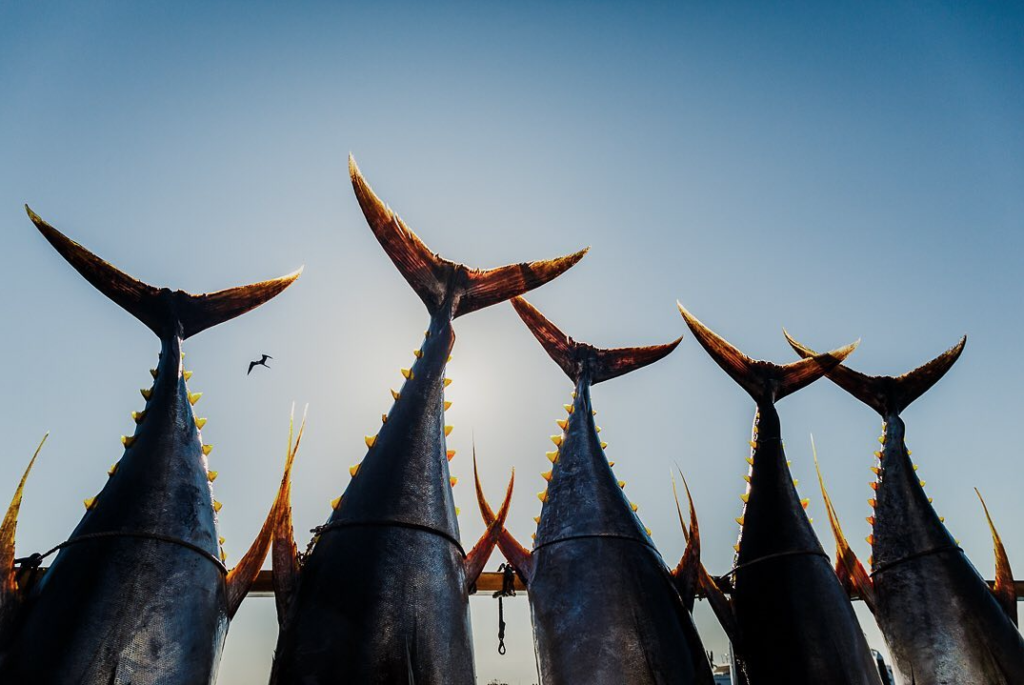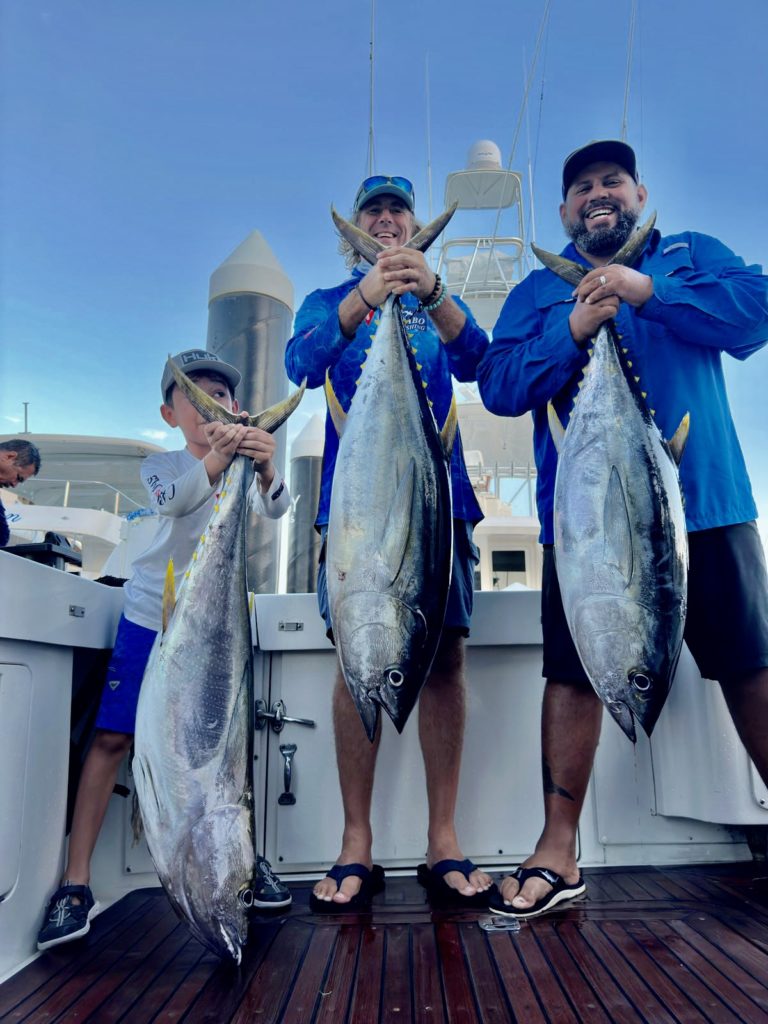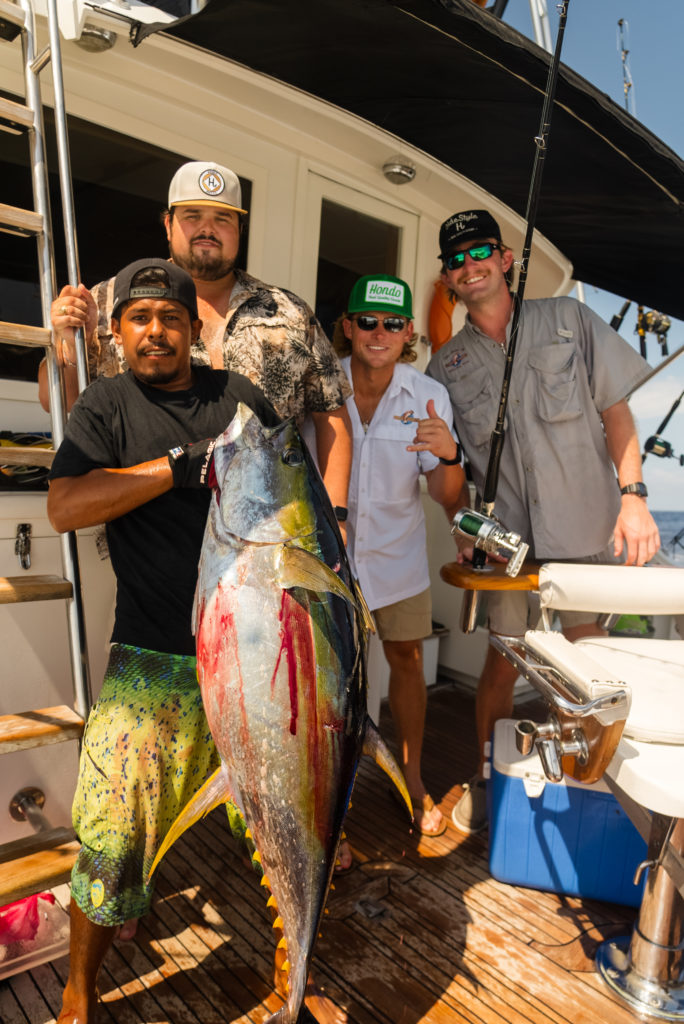Yellowfin Tunas in Cabo San Lucas
Yellowfin tuna, renowned for their speed and strength, are amongst the most sought-after sport fish in the world. In Cabo San Lucas, fishermen from around the globe flock to chase these prized catches, making for a thrilling angling experience. With the right tools and strategies, you can enhance your chances of landing the majestic yellowfin tuna in this world-class fishing destination.
The Power of Technology: Satfish App
Get $20 Usd off your SATFISH subscription with Promo Code TAGCABO
In modern fishing, success isn’t just about traditional knowledge and intuition; technology plays a pivotal role. Enter the Satfish app. This cutting-edge software assists anglers in determining the most productive fishing grounds for yellowfin tunas. By providing up-to-date information on water currents, wind conditions, and chlorophyll concentration, the Satfish app can significantly improve your chances.
The highest concentration of chlorophyll is an indicator of regions where plankton thrive. This in turn attracts smaller fish, which are primary food sources for yellowfin tunas. Locating these hotspots can be the key to finding big tuna schools.
Spotting From Afar with SIMRAD Radar
Having a bird’s-eye view can be a game-changer, quite literally. Using the SIMRAD radar system, we’ve had enormous success spotting birds from distances of up to 8 miles away. Birds, especially when they flock in large numbers, often signal the presence of baitfish or predators below. Specifically, for yellowfin tunas, the presence of spinner dolphins is an excellent indicator.
Spinner dolphins and yellowfin tunas share a mutual relationship in the wild. Often, you’ll find them swimming together, with spinner dolphins surrounding the tuna schools. Once you locate these dolphins, you’re on the right track to finding your prized catch.
Tackling Techniques for Yellowfin Tuna
1. Surface Feeding Tuna: When yellowfin tunas are within 50ft of the surface and feeding actively, they are usually visible to the naked eye. During these instances, casting stickbaits or poppers can lead to instantaneous action. However, there’s a peculiar behavior that anglers have observed. If you lose a tuna after hooking it with a particular lure, chances are you won’t catch another with that same lure. It’s essential to switch it up and try a different lure.
2. Deep Swimming Tuna: When your sonar indicates that the tunas are around 150ft deep and are stationary or swimming within a limited radius, it’s time to change tactics. Stopping the boat and deploying live bait or squid is the way to go. Live bait naturally dives to depth, while squid needs to be weighted to reach the desired depth.
3. Kite Fishing: Sometimes, the tunas are surface feeding but are wary of boats. In such situations, kite fishing becomes invaluable. Using a kite to dangle a jumme fish lure (which mimics a flying fish) away from the boat’s disturbance can lure in bigger tunas. This technique not only keeps the lure at a considerable distance from the boat but also presents a tantalizing topwater action that big tunas can’t resist.
Final Thoughts
Cabo San Lucas, a paradise for anglers, promises unmatched opportunities for yellowfin tuna pursuits. However, success in this sport is reserved for those who harmoniously blend knowledge, intuition, and technology. By integrating modern innovations like the Satfish app and SIMRAD radar, understanding the intricate nuances of tuna and the marine ecosystem, and employing diverse and adaptable approaches, you set the stage for a remarkable fishing experience. So, the next time you embark on a fishing expedition, arm yourself with these insights and strategies, and prepare for a thrilling yellowfin tuna encounter.



